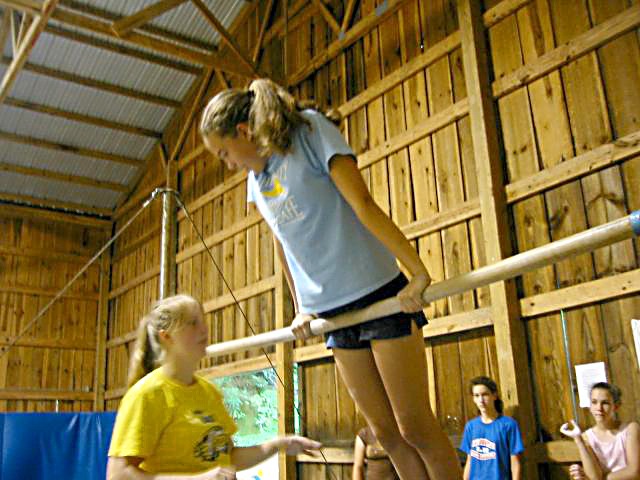

Gymnastics is an activity involving performance of exercises requiring physical strength, flexibility, agility, coordination, balance, and grace. Internationally, all of the gymnastic sports are governed by the Fédération Internationale de Gymnastique (FIG) with each country having its own national governing body affiliated to FIG. Competitive Artistic gymnastics is the best known of the gymnastic sports. It typically involves the women's events of uneven parallel bars, balance beam, floor exercise, and vault. Men's events include floor exercise, pommel horse, still rings, vault, parallel bars, and high bar. Gymnastics evolved from exercises used by the ancient Greeks, that included skills for mounting and dismounting a horse, and from circus performance skills.


Exercises of the ancient Greeks at first consisted of athletic feats performed by each individual according to his own notion, and were encouraged among the youth as combining amusement with exercise. These exercises were at length reduced to a system which formed a prominent feature in the state regulations for education. In fact, the period for gymnastics was equal to the time spent on art and music combined.[4] All Greek cities had a gymnasium, a courtyard for jumping, running, and wrestling.


In the fifteenth century, Girolamo Mercuriale from Forlì (Italy) wrote De Arte Gymnastica, that brought together his study of the attitudes of the ancients toward diet, exercise and hygiene, and the use of natural methods for the cure of disease. De Arte Gymnastica also explained the principles of physical therapy and is considered the first book on sports medicine.
In the late eighteenth and early nineteenth century Germany, two pioneer physical educators – Johann Friedrich GutsMuths (1759–1839) and Friedrich Ludwig Jahn (1778–1852) – created exercises for boys and young men on apparatus they had designed and that ultimately led to what is considered modern gymnastics. In particular, Jahn crafted early models of the horizontal bar, the parallel bars (from a horizontal ladder with the rungs removed), and the vaulting horse.[

Artistic gymnastics is usually divided into Men's and Women's Gymnastics. Typically men compete six events: Floor Exercise, Pommel Horse, Still Rings, Vault, Parallel Bars, and High Bar, while women compete four: Vault, Uneven Bars, Balance Beam, and Floor Exercise. In some countries, women at one time competed on the rings, high bar, and parallel bars (for example, in the 1950s in the USSR). Though routines performed on each event may be short, they are physically exhausting and push the gymnast's strength, flexibility, endurance and awareness to the limit.
Artistic gymnasts participate in competitions which use a standardized level system ranging from Level 1 to Level 10. Levels 1 through 6 compete using compulsory routines. In Levels 7 though 10, athletes may use their own routines created from a set of skills which must be included. Elite competition, open to skilled younger athletes in lower levels, is typically reserved for athletes who have aged out of the junior program; for example, in the United States, Junior Olympic competition ends when the athlete reaches age 18. Elite gymnasts compete for team slots, which allows them access to international competition. It is accepted practice at the compulsory and optional level to use standardized routines in the training of young gymnasts.

No comments:
Post a Comment